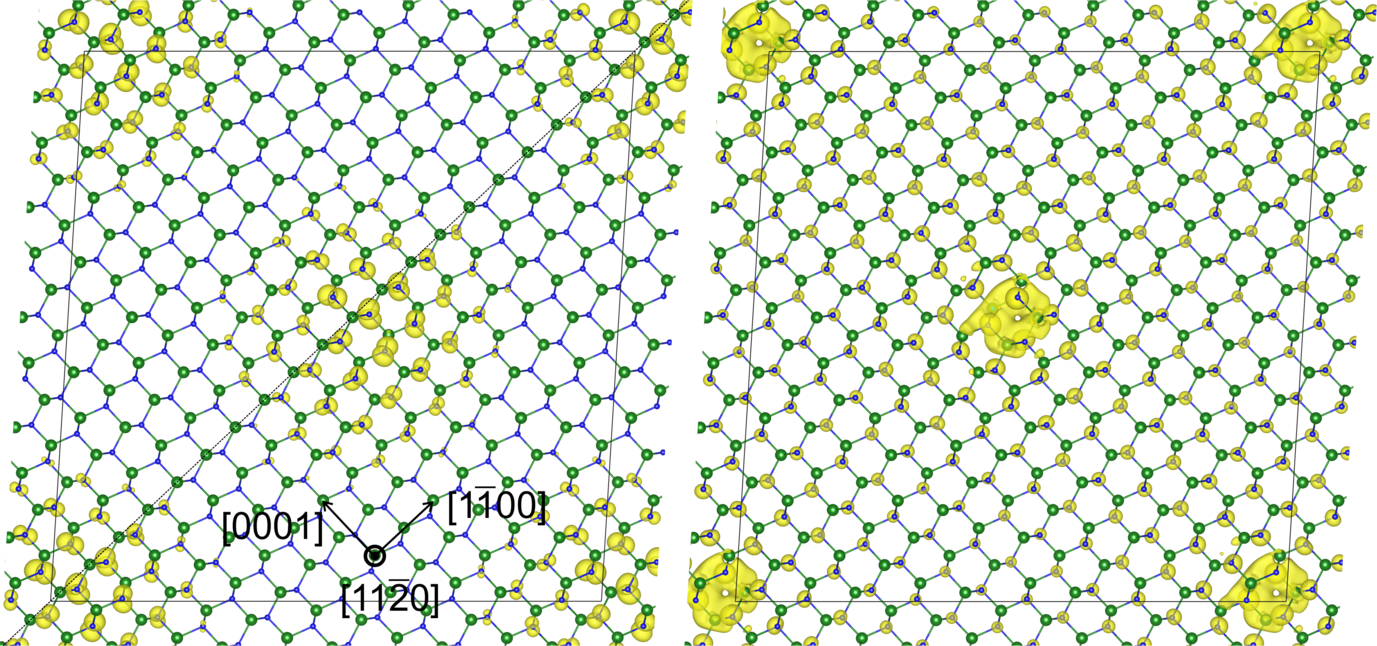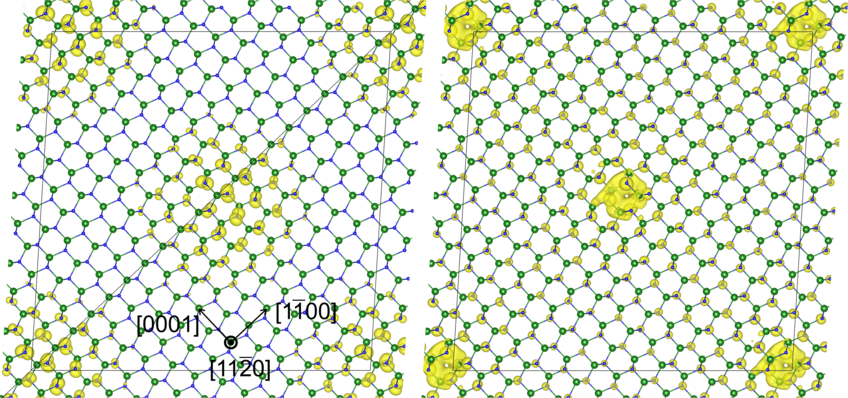Surfactants and antisurfactants in III-Nitrides
Surfactants and antisurfactants are species, deposited prior to growth on the substrate to overcome fundamental limitations set by thermodynamics and adatom kinetics in a particular heteroepitaxial system. The role and mechanisms of surfactants and self-surfactants in the growth of group III-Nitrides is well established and understood. However, the physics governing the technological important example of Si as antisurfactant in GaN was under intensive debate.
In contrast to surfactants that mainly modify the growth mode by influencing adatom kinetics, we have revealed that antisurfactants modify the chemical potentials at the surface. This is based on the formation of a single monolayer of SiGaN3 subsurface layer that is electrically active and introduces a dipole moment caused by a charge transfer from the aforementioned layer to the surface. Hence, growth proceeds in a lateral epitaxial overgrowth way only at locations where the SiGaN3 layer is not present and allows to block and reduce the density of threading dislocations.

Surface energies, referenced with respect to the SiGaN3 terminated surface, as function of the number of GaN overlayers grown above the SiGaN3 layer. The upper left and right insets represent the atomic configurations without and with two GaN overlayers ontop the SiGaN3 mask, respectively. In the case of 2 GaN overlayers the charge transfer and the build in electrical dipole moment are indicated. The bottom right inset represents a top view of the SiGaN3 layer. The dashed frame indicates the √3×√3 R30o reconstruction. Green, blue, red, and white balls indicate Ga, N, Si atoms and Ga vacancies, respectively.
© Liverios Lymperakis, Max-Planck-Institut für Eisenforschung GmbH
